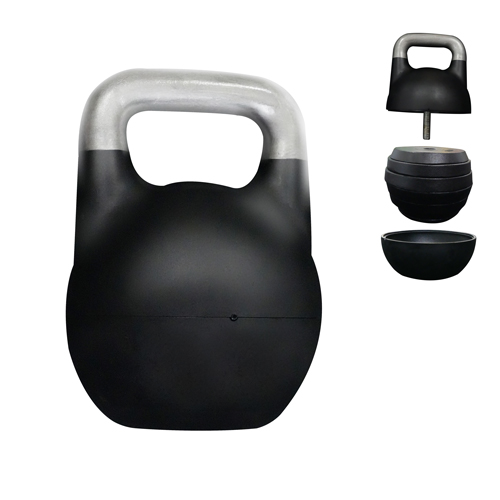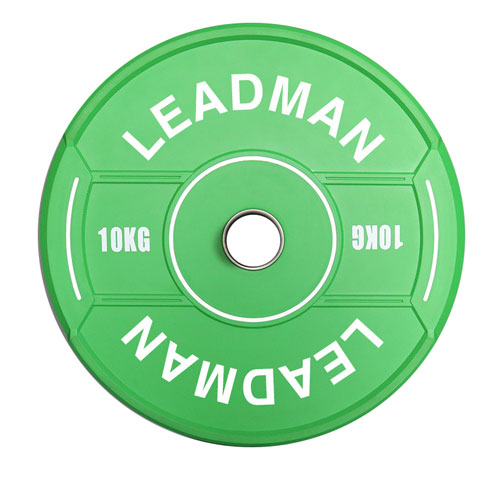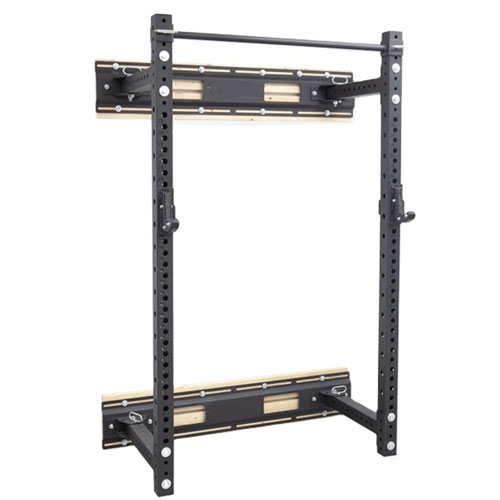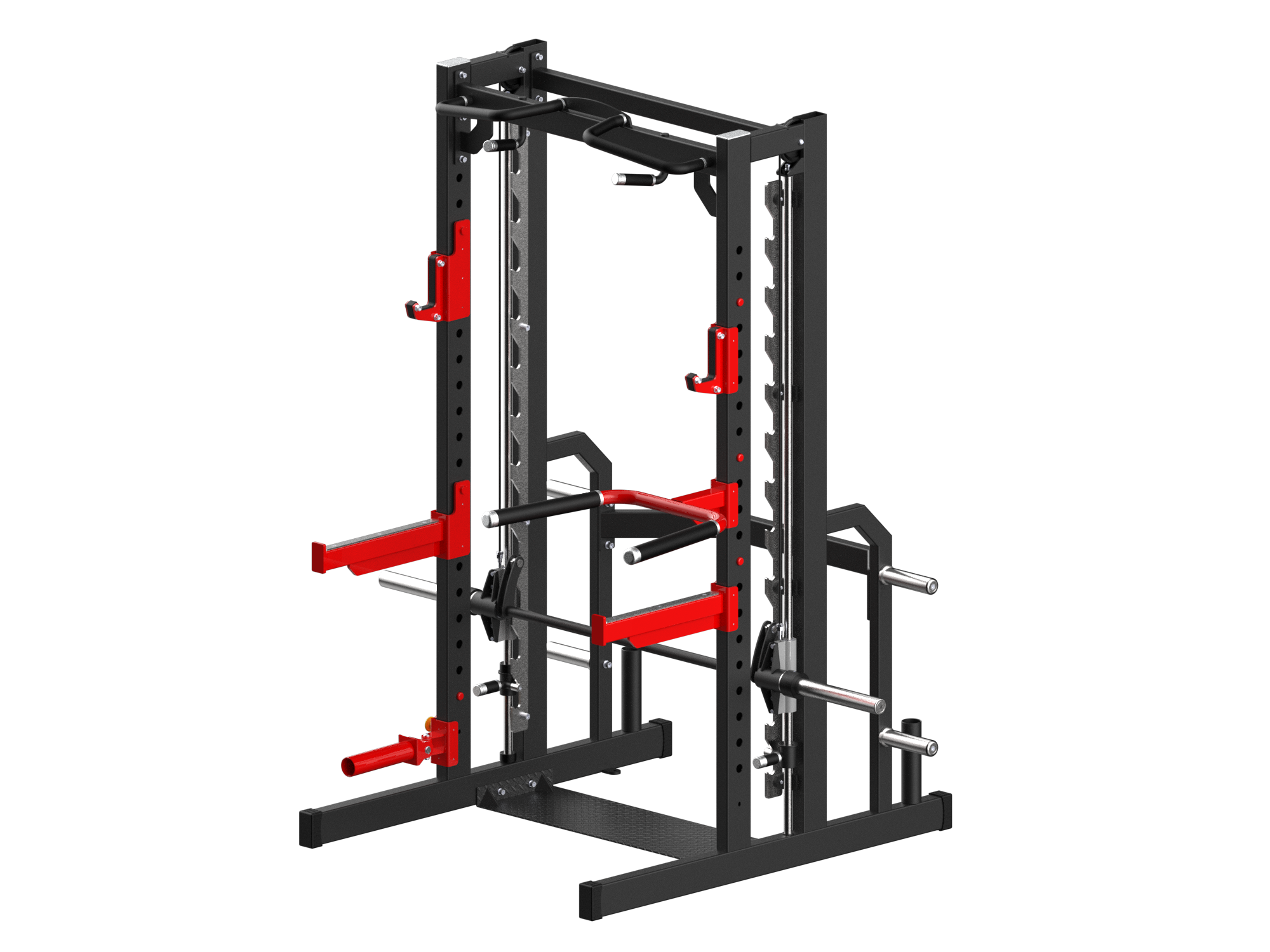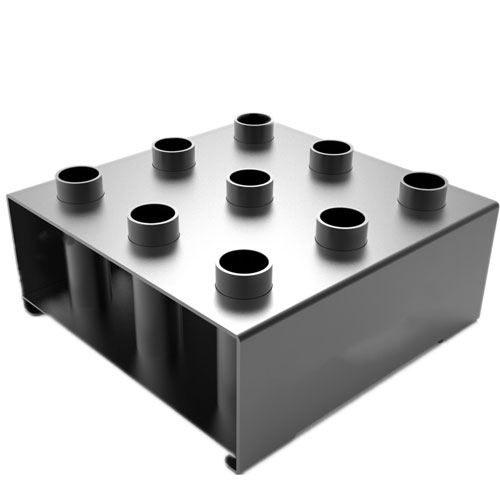Pehea e hoʻomaʻemaʻe ai a mālama i kāu mau lako hale haʻuki home
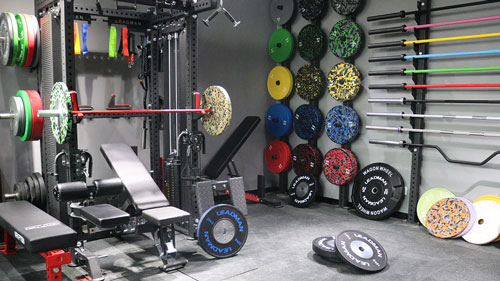
Maintaining a clean and well-maintained home gym is crucial not only for hygiene but also for the longevity and safety of your equipment. Neglecting cleanliness can lead to the buildup of germs, the development of rust, and ultimately, damage to your valuable investment. This comprehensive guide will walk you through the proper cleaning and maintenance procedures for your weight bench, dumbbells, and kettlebells, ensuring your workout space remains a safe and effective environment.
Hoʻomaka: No ke aha e pono ai ka maʻemaʻe
Your home gym is your sanctuary, a place dedicated to improving your physical and mental well-being. However, the environment itself needs care and attention. Sweat, dust, and grime accumulate on your equipment, creating a breeding ground for bacteria and other microorganisms. This can lead to unpleasant odors, skin infections, and the spread of germs. Furthermore, neglecting regular cleaning can accelerate rust formation on metal components, causing structural damage and compromising the integrity of your equipment. On the other hand, consistent cleaning and maintenance will extend the lifespan of your equipment, maintain its value, and provide a more hygienic and enjoyable workout experience.
Ke hoʻomaʻemaʻe ʻana i kou pae kaumaha
ʻO ka papa kaumaha, ʻo ia ka ʻāpana kikowaena o kāu hale haʻuki home, pono e hoʻomaʻemaʻe pono e mālama i ka maʻemaʻe a me ka pololei o ke ʻano.
A. Hoomaemae Ili: Begin by wiping down the entire bench surface with a solution of mild soap and water. Avoid harsh chemicals, abrasive cleaners, and bleach, as these can damage the material. Use a clean microfiber cloth or sponge, paying close attention to crevices and joints where sweat and grime tend to accumulate. For a more thorough disinfection, you can use disinfectant wipes specifically designed for use on surfaces. Always follow the product instructions carefully.
B. Hoʻomaʻemaʻe Upholstery (inā pili):ʻO ke ʻano hoʻomaʻemaʻe no kāu upholstery papa kaumaha ma muli o ka mea.
- Vinyl:He mea maʻalahi ka hoʻomaʻemaʻe ʻana i ka upholstery vinyl. E holoi i lalo me kahi lole pulu a me ke kopa maʻemaʻe, a laila maloʻo loa. No nā ʻeleʻele paʻakikī, e hoʻāʻo i ka hui ʻana o ka kopa maʻemaʻe a me ka soda baking, e holoi mālie i ka wahi ma mua o ka holoi ʻana maʻemaʻe.
- ʻili: Leather requires a more gentle approach. Use a leather cleaner specifically designed for this material. Avoid excessive moisture, which can damage the leather. Condition the leather after cleaning to maintain its suppleness.
- Ka lole: Fabric upholstery requires more care. Vacuum or brush the surface to remove loose dirt and debris. For spot cleaning, use a fabric upholstery cleaner and follow the product instructions. For larger stains, consider professional upholstery cleaning.
C. Hoʻomaʻemaʻe kiʻi:ʻO ke kiʻi metala o kāu paepae kaumaha e maʻalahi i ka lepo a me ka hōʻiliʻili lepo. E holoi i lalo me ka lole pulu a me ke kopa maʻemaʻe, e nānā ana i nā wahi e ulu ai ka ʻōpala, e like me nā hono a me nā welds.
D. Kāohi Rust: Regularly inspect the frame for signs of rust. If you find any, address it immediately using a rust remover following product instructions. For preventative maintenance, consider applying a light coat of silicone-based lubricant to moving parts and joints to reduce friction and prevent rust.
E. Mālama mau: Check for loose bolts, screws, or welds regularly. Tighten any loose components or have them repaired by a professional if needed. This prevents structural damage and ensures your bench remains safe to use.
Hoomaemae i kou mau Dumbbells
ʻO nā Dumbbells, mālama mau ʻia i ka wā hoʻomaʻamaʻa, pono e hoʻomaʻemaʻe ikaika e pale i ka laha ʻana o nā germs a mālama i ko lākou kūlana.
A. Hoomaemae ana i na Kaumaha:ʻO ke ʻano hoʻomaʻemaʻe e pili ana i ka mea o kāu dumbbells.
- hao hao: Cast iron dumbbells are susceptible to rust. Wipe them down with a damp cloth and mild soap after each use. For stubborn grime, use a stiff brush and a solution of baking soda and water. Rinse thoroughly and dry completely to prevent rust.
- i uhi ʻia i ka Rubber: Rubber-coated dumbbells are easier to clean. Wipe them down with a damp cloth and mild soap. You can also use disinfectant wipes for extra hygiene.
- Chrome: Chrome dumbbells are relatively easy to maintain. Wipe them down with a damp cloth and mild soap. Avoid abrasive cleaners, which can scratch the chrome finish.
B. Hoʻopaʻa lima: The grips of your dumbbells are high-touch areas requiring thorough cleaning. Use a damp cloth and mild soap, paying close attention to crevices. Disinfectant wipes are effective for killing germs.
C. Kāohi Rust: Rust is a common problem with cast iron dumbbells. Ensure they are thoroughly dried after each use. Store them in a dry place, ideally with a dehumidifier if you live in a humid climate. A light coat of silicone-based lubricant on the metal parts can also help prevent rust.
D. Waihona & Hoʻonohonoho: Store your dumbbells in an organized manner to prevent damage and maintain cleanliness. Consider a dumbbell rack or stand to keep them off the floor and prevent scratches.
Hoomaemae ana i kou mau Kettlebells
Pono nā Kettlebells, e like me nā dumbbells, i ka hoʻomaʻemaʻe maʻamau e mālama i ka maʻemaʻe a pale i ka pōʻino.
A. Hoomaemae i na Kettlebells: The cleaning method will depend on the material (cast iron, rubber-coated, etc.). Follow the same cleaning procedures outlined for dumbbells, adapting the cleaning solution based on the material.
B. Hoomaemae lima: The kettlebell handle is a high-touch area. Pay extra attention to cleaning the handle thoroughly after each use, as it is particularly prone to sweat and grime buildup. Use a brush or cloth to reach all crevices.
C. Kāohi Rust: The prevention of rust on kettlebells is similar to dumbbells. Ensure thorough drying after each use and store them in a dry place. Consider using a rust preventative lubricant for cast iron kettlebells.
D. Waihona & Hoʻonohonoho: Store your kettlebells in a designated area to prevent damage. Consider a kettlebell rack or stand, or even hanging them on a wall-mounted rack.
Ke koho ʻana i nā huahana hoʻomaʻemaʻe kūpono
He mea nui ke koho ʻana i nā huahana hoʻomaʻemaʻe kūpono no ka mālama ʻana i kāu mau mea hana me ka ʻole o ka pōʻino.
A. Nā hana a me nā hana ʻole:
- Hana:E hoʻohana i ke kopa a me ka wai maʻemaʻe, nā holoi holoi disinfectant (i hoʻolālā pono ʻia no nā ʻaoʻao o nā mea hana), a me nā lubricant-based silicone.
- Mai:E hoʻohana i nā mea hoʻomaʻemaʻe abrasive, bleach, kemika ikaika, a i ʻole nā solvents, hiki ke hōʻino i ka hoʻopau ʻana a me nā mea hana o kāu lako.
B. Mea Hoʻomaʻemaʻe Kūikawā:
- Lapa:Kopa maʻemaʻe a me ka wai, holoi holoi disinfectant.
- Chrome:Kopa maʻemaʻe a me ka wai, kahi mea hoʻomaʻemaʻe chrome non-abrasive.
- Vinyl:Kopa a me ka wai maʻemaʻe, mea hoʻomaʻemaʻe vinyl.
- ʻili:Mea hoʻomaʻemaʻe ʻili a hoʻomaʻemaʻe.
- Ka lole:Mea hoʻomaʻemaʻe lole lole.
Hoʻoponopono i nā ʻili a me nā pilikia
ʻO ka hoʻoponopono koke ʻana i nā ʻili a me nā pilikia e hiki ke pale i ka pōʻino hou aʻe a mālama i ke ʻano o kāu mau mea hana.
A. ʻAhu ʻula:Hiki ke hoʻoneʻe ʻia nā ʻili o ka hou ma ka holoi ʻana i ka wahi i hoʻopilikia ʻia me ke kopa a me ka wai. No nā ʻōpala paʻakikī, e hoʻāʻo i kahi paʻi o ka soda a me ka wai.
B. Wehe ʻAi: If you notice rust, act quickly. Use a rust remover following the product instructions carefully. For small areas, you can use fine steel wool.
C. Nā ʻōpala a me nā ʻū: Minor scratches and dings are unavoidable. Try to minimize them by careful handling. You can sometimes reduce the appearance of minor scratches using touch-up paint (for metal frames) or specialized repair compounds for rubber or vinyl coatings.
Ka pinepine o ka hoomaemae ana
E hoʻokumu i kahi papa hoʻomaʻemaʻe e kūpono i kāu ʻano hoʻohana.
A. Manao Manao: After each use, wipe down your equipment with a damp cloth or disinfectant wipe. Perform a deep clean, including thorough scrubbing and inspection for damage, once a week or every two weeks depending on usage frequency.
B. Hoʻomaʻemaʻe wikiwiki vs. Hoʻomaʻemaʻe hohonu: A quick clean involves wiping down the equipment after each workout. A deep clean involves a more thorough cleaning and inspection, including addressing any stains or damage.
Kāohi ʻana i ka pōʻino a hoʻonui i ke ola
Pono ka mālama ʻana a me ka mālama pono ʻana no ka hoʻonui ʻana i ke ola o kāu mau mea hana.
A. Ka mālama pono ʻana: Store your equipment in a dry, well-ventilated area, away from direct sunlight and moisture. Use racks and stands to prevent scratches and damage.
B. E pale ana i ka hoouka ana: Never exceed the weight limits of your equipment. Overloading can lead to structural damage and injury.
C. Mālama palekana: Handle your equipment carefully to avoid dropping or damaging it. Use proper lifting techniques to prevent accidents.
Ke hana ʻana i kahi hana hoʻomaʻemaʻe
ʻO ka hoʻokumu ʻana i kahi hana hoʻomaʻemaʻe maʻamau e pono ai ka hoʻopaʻi, akā nui nā pōmaikaʻi.
A. Hoʻomohala ʻana i kahi maʻamau: Make cleaning part of your workout routine. Wipe down your equipment immediately after each use.
B. E maʻalahi: Keep cleaning supplies readily available near your workout area. A quick wipe down after each session is far easier than a major cleaning project later.
Ka hopena
ʻO ka mālama ʻana i kahi hale hauʻoli maʻemaʻe a mālama maikaʻi ʻia he mea hoʻopukapuka i kou olakino, palekana, a me ka lōʻihi o kāu mau mea hana. Ma ka hahai ʻana i nā ʻōlelo aʻoaʻo a me nā hoʻolālā i hōʻike ʻia i loko o kēia alakaʻi, hiki iā ʻoe ke hana i kahi hana hoʻomaʻemaʻe hoʻomau e hōʻoiaʻiʻo i kāu wahi hoʻomaʻamaʻa e noho palekana, maʻemaʻe, a leʻaleʻa no nā makahiki e hiki mai ana. Kaʻana like i kēia pou me kāu mau hoa hauʻoli a e hoʻomaopopo iā mākou i kāu ʻōlelo hoʻomaʻemaʻe ma nā ʻōlelo ma lalo!
FAQ e pili ana i ka hoʻomaʻemaʻe ʻana a me ka mālama ʻana i nā lako haʻuki home
1. ʻEhia mau manawa e hoʻomaʻemaʻe ai au i kaʻu noho kaumaha, nā dumbbells, a me nā kettlebells?
- Pane: Manaʻo ʻia e hoʻomaʻemaʻe wikiwiki ma hope o kēlā me kēia hoʻohana ʻana ma ka holoi ʻana i nā mea hana me kahi lole pulu a i ʻole holoi disinfectant. No ka hoʻomaʻemaʻe hohonu, ʻo ia hoʻi ka holoi ʻana a me ka nānā ʻana i ka pōʻino, e ʻimi i hoʻokahi manawa i ka pule a i ʻole ʻelua pule, e pili ana i ka nui o kāu hoʻohana ʻana i kāu mau mea hana.
2. He aha nā mea hoʻomaʻemaʻe e palekana i ka hoʻohana ʻana ma kaʻu mau mea hana haʻuki?
- Pane: E hoʻohana mau i ka kopa a me ka wai maʻemaʻe no ka hapa nui o nā ʻili, a koho i nā holoi holoi disinfectant i hoʻolālā pono ʻia no nā lako haʻuki. No ka hoʻomaʻemaʻe pono waiwai, hoʻohana i ka mea hoʻomaʻemaʻe ʻili no ka hoʻomaʻemaʻe ʻili, ka mea hoʻomaʻemaʻe vinyl no ka vinyl, a me ka mea hoʻomaʻemaʻe lole no ka uhi lole. E hōʻalo i nā kemika koʻikoʻi e like me ka bleach, nā mea hoʻomaʻemaʻe abrasive, a i ʻole nā solvents, no ka mea hiki ke hōʻino i kāu mau mea hana.
3. Pehea e hiki ai iaʻu ke pale aku i ka ʻōpala ma kaʻu mau dumbbells a me kettlebells?
- Pane: No ka pale ʻana i ka ʻōpala, e hōʻoia i ka maloʻo loa ʻana o kāu mau mea hana ma hope o ka hoʻohana ʻana, ʻoi aku ka maikaʻi inā ʻoe e hana ma kahi ʻano haʻahaʻa. E mālama i kāu mau dumbbells a me nā kettlebells ma kahi maloʻo, a e noʻonoʻo e hoʻohana i kahi lubricant silicone pale i ka ʻōpala ma nā ʻāpana metala. E nānā mau i kāu mau mea hana no nā hōʻailona mua o ka ʻōpala a wehe koke iā ia me ka hoʻohana ʻana i kahi mea hoʻohemo ʻōpala.
4. He aha kaʻu e hana ai inā loaʻa ka hou a i ʻole ka pala kaʻu mea hana?
- Pane: No nā ʻōpala hou, holoi i ka wahi i hoʻopilikia ʻia me kahi kopa maʻemaʻe a me ka wai. No nā ʻōpala paʻakikī, hiki iā ʻoe ke hana i kahi paʻi o ka soda a me ka wai e holoi mālie i ka wahi. No ka wehe ʻana i ka ʻōpala, e hoʻohana i kahi mea hoʻopau ʻōpala e like me nā ʻōlelo a ka mea hana. No nā wahi ʻōpala liʻiliʻi, hiki iā ʻoe ke hoʻohana i ka huluhulu kila maikaʻi e holoi i ka wahi i hoʻopilikia ʻia.
5. Pehea e hiki ai iaʻu ke hoʻopaʻa i kaʻu mau mea haʻuki e pale ai i ka pōʻino?
- Pane: E mālama i kāu mau mea haʻuki ma kahi maloʻo a me ka makani maikaʻi, ma kahi mamao o ka lā a me ka makū. E hoʻohana i nā kīʻaha a i ʻole nā kū no ka mālama ʻana i kāu mau dumbbells a me nā kettlebells mai ka papahele e pale ai i nā ʻōpala a me ka ʻaʻahu. E hōʻoia i ka mālama ʻia ʻana o nā mea hana i mea e pale aku ai i ka pōʻino.

